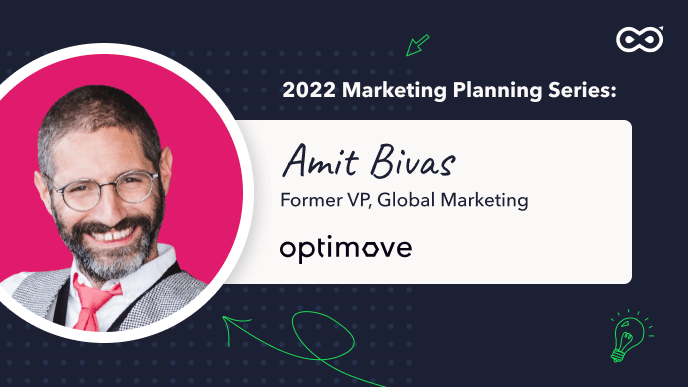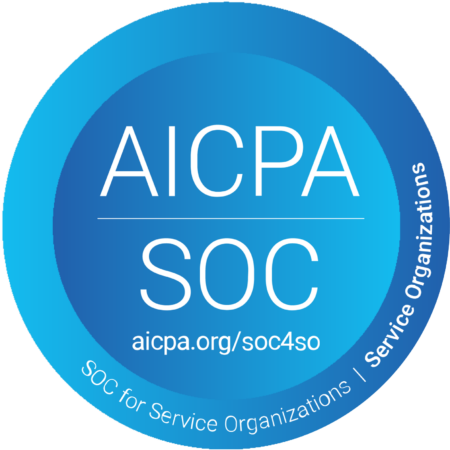Amit Bivas, former VP Global Marketing at Optimove, joined us today for an in-depth discussion. Amit has extensive experience planning, developing, and executing both B2B and B2C marketing strategies.
Top companies such as Staples, Papa John’s, and Dollar Shave Club use Optimove CRM products. Optimove has been recognized as a Leader in “The Forrester WaveTM: Cross-Channel Campaign Management” under Amit’s leadership.
Let’s take a look at some of the key insights from this interview.
- How do you ensure that sales and marketing are aligned? Create transparency between teams and ensure that all of the efforts are always aimed towards the same audience.
- Are some of the KPIs shared by sales and marketing? Every initiative has to be tied directly or indirectly to revenue. You can then derive linked KPIs across the board.
- How do you account for a long and uncertain sales cycle, given the lag between action and impact? When you know where each account is in the funnel, the lag is not felt as seriously. It’s easier to see the impact this way.
- What is the best way to show the contribution of marketing? Assess your marketing impact against a control group that has not been exposed to your marketing. You will be able to get a clear uplift attributable to marketing.
How Do You Ensure Sales And Marketing Alignment?
I definitely think that sales and marketing alignment is critical for the success of the entire enterprise.
What we do in terms of the alignment between sales and marketing is first and foremost create as much transparency as we can. And transparency is letting them know what we’re looking at and letting us understand what they’re looking at.
But other than that we work in an ABM approach – a fully blown ABM approach.
Which means that we only invest in accounts where we know who they are and the people that are on those accounts. And when we built the TAM – total addressable markets – it was signed off and fully approved and acknowledged by both sales and marketing. Which means that all of the efforts are always aimed towards the same audience.
So we have our TAM. It’s broken down into tiers and each, and every one understands what they’re working on. And we make sure that all of our marketing artillery aims toward the same audience.
Do Sales And Marketing Share Some Of The KPIs Together Or How Do They Communicate About Those KPIs?
All of the KPIs are open and transparent to the entire company.
The source of each opportunity closed-won, win rate, closed-loss, everything is transparent and accessible to the entire company – not only the sales and marketing – the entire company.
So the entire company is focused toward revenue. New business and existing business. And then, each and every one of the initiatives that are, worked on or started or ongoing, needs to be tied to revenue. It’s not necessarily first degree, it could be even second or third degree, but it always needs to be aligned with impact on revenue.
How Do You Account For A Long And Uncertain Sales Cycle With A Lag Between Action Impact?
So the impact isn’t with a lag, because at any point in time, we understand where the account is in the funnel.
We have different narratives for each stage of the funnel. So for example, when there’s an active sales cycle in place, i.e, the account has become an opportunity then the narrative is – pointing out our distinction. So we have a lot of campaigns around voice of customer testimonials, case studies, those kinds of things.
Whereas upper funnel, the whole narrative is, know my name, know the problem that I solve. So marketing in terms of the treatment is always aligned with where the account is in terms of their life cycle. Even for accounts that we’ve already closed-lost for example, also have a dedicated treatment, a dedicated narrative.
So at any stage of the account life cycle, there’s a different treatment that is a function of where they’re at in their cycle.
Maximizing touchpoints
Unlike traditional B2B marketing with ABM, the goal is to maximize the number of touchpoints you have for each and every account. And in that sense, we’re going to target, however, and wherever we can. So that includes digital channels – LinkedIn, Facebook, Instagram, as well as email marketing.
It also includes event marketing and content marketing that targets those specific accounts. We have post-funnel, which is also quite unique in the content marketing space, which is our owned media publication where we can write an article about a company that’s currently higher in the funnel and we want to grab their attention.
So we write an article on them, analysing their CRM. And then when you share that article on social media, then we will tag the company and tag the individuals that we want, to grab their attention and so on and so forth. The idea is that we’re looking again to maximise the amount of touch points that we have per each and every stage.
Also, the lower the account is in the funnel, then you’re willing to invest more on that account, right? Because their likelihood to convert is higher. So your investment is also a function of likelihood to commit.
How Do You Show The Contribution Of Marketing Channels?
Using a control group
So each and every one of the activities we always measure with a control group. We set aside a group that is not exposed to our marketing activity. And then we have the group that is exposed and the thesis is that even regardless of the marketing activities, something would have happened. Many times they would come in through SEO or other activities that you do across the board and disciplines.
And then we set them aside and they’re isolated for marketing treatment. When we’re able to compare the two, you can calculate the uplift – which is the marginal impact of your activity. Based on that, you understand exactly what’s your ROI and you understand how much you can invest.
So that’s for the more guagable, quantifiable things.
CAC-LTV
Then you always have the CAC-LTV approach. You’re trying to reach a magnitude of three, right? You want your CAC to be one-third of your LTV at least, or lower than that. And then you build your budget based on that, and you understand what your LTV is.
You also need to have an experimentation budget. And then other areas that are less guagable. PR is a discipline that’s very hard to find attributes with direct business KPIs. There are several different KPIs for PR share of voice for instance. But looking to connect it to revenue is hard because we’re not looking again to generate leads off of PR. We’re looking to generate touch points. So with stuff like PR, you just take that, spend and load it on the other channels. Again, trying to not exceed the CAC-LTV ratio. And seeing if it generates an uplift, when, for example, you send an email campaign with that PR hit, did it generally generate an uplift in website visits and email clicks? If it did, you can attribute a certain impact to that campaign.
Do You Revisit Your Plan To Deal With Changes?
A hundred percent. And so there’s like a budget, a plan. And then there’s always changes, new things come up.
For example, planning your event calendar, right? Yeah, 2019. We probably had a 12 month plan, or even more than that, because there are events that you commit to ahead of time. But at this point in time, we go quarter by quarter. We do have a roof budget for it, like an event budget, but we’re committing quarter by quarter because we don’t know where things are going.
So yes, we already had events this year, but they’re different than what we’ve seen. So we’re going step-by-step. And for example, even if we did hit that budget before the end of the year, we can always create a case, bring it to the board and then get an addition to that budget.
So everything is more flexible. In terms of planning, yes, you have this big strategy, you have a plan. But still it’s going to be fluid. Things will change. They always do even prior to COVID, but even more now in 2022.
Conclusion
Since Optimove helps other companies orchestrate a science-driven CRM Marketing plan, it’s interesting to see how they run their own planning. In this interview, we learned a lot about Optimove’s unique perspective, including using a control group, maximizing touchpoints, and improving sales and marketing alignment.



